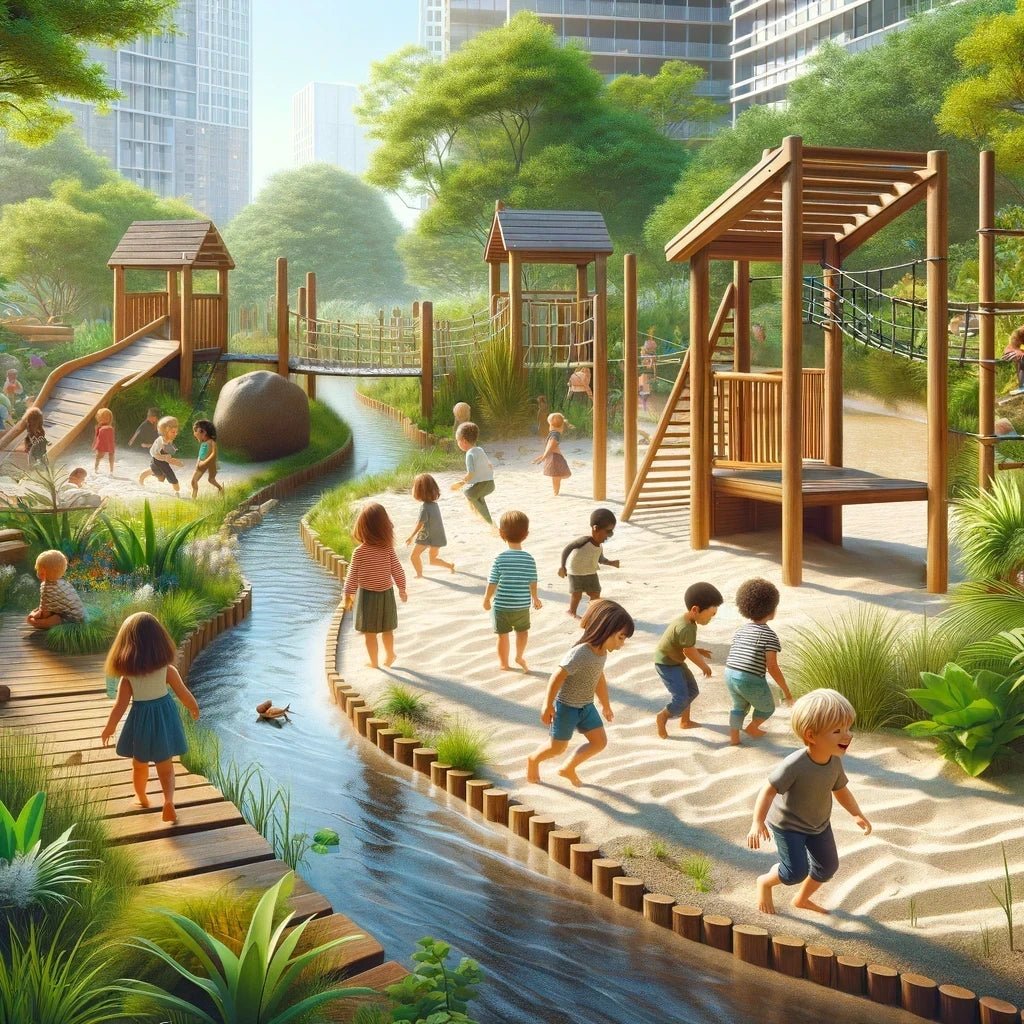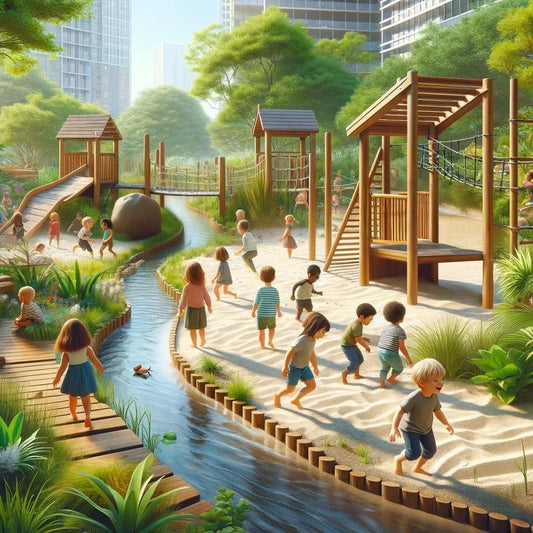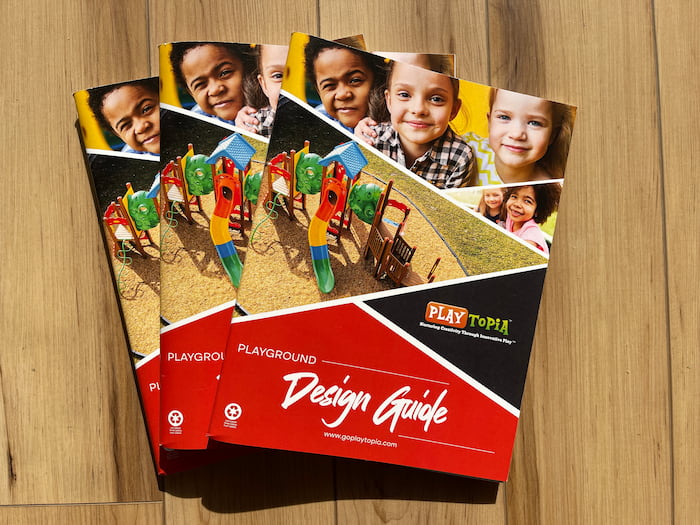
Embracing Nature in Playground Design: A Guide to Greener Play Spaces
Jennie HallShare This Article
In the quest to design more engaging, healthy, and sustainable play environments, integrating nature into playgrounds is becoming a pivotal trend. Not only does this approach foster a love and respect for the environment, but it also enhances children's physical and mental development. This blog explores the benefits and practical ways of incorporating natural elements into playground designs. If you need help implementing this ideas into your own playscape let us know! Simply click on the chat option and describe your project.
The Benefits of Nature-Integrated Playgrounds
1. Enhanced Learning Opportunities
Natural playgrounds offer children endless possibilities to learn and discover. From observing the lifecycle of plants and insects to engaging in sensory activities with natural materials, children can learn science, math, ecology, and more in an interactive setting. Check out some of our TerraDome!
2. Improved Physical Health
Nature-based playgrounds encourage a range of physical activities that are often more stimulating and physically demanding than those offered by traditional playground equipment. Climbing trees, jumping over logs, and maneuvering through natural obstacles can improve balance, coordination, and overall physical fitness.
3. Boosted Mental Well-being
Studies show that time spent in nature can significantly reduce stress and anxiety in children. Natural settings can soothe children, reduce aggression, and improve mood, offering a peaceful retreat from the urban hustle. Children cannot bounce off the walls... if there are no walls!
4. Promotion of Creativity and Imagination
Natural playgrounds often feature unstructured play elements like sand, water, rocks, and woods, which can be used in limitless ways. This ambiguity encourages creativity and imaginative play, allowing children to see and engage with the world in new and exciting ways.
Key Elements of Nature- Integrated Playground Design
1. Use of Natural Materials
Incorporate materials such as wood, stone, sand, and water. These materials are not only environmentally friendly but also aesthetically pleasing and better integrated with the natural surroundings.
2. Varied Topography
Incorporating different levels and types of terrain, such as hills, valleys, and flat areas, can make play more dynamic and exciting. It can also mimic the natural landscape, making for a more immersive environment. Throw in a boulder or two for climbing!
3. Vegetation and Plant Life
Planting native trees, bushes, flowers, and grasses not only beautifies the playground but also attracts wildlife, teaches children about local ecosystems, and provides shade and cleaner air. Make sure your plant life is safe for children and animals before integrating into the playscape.
4. Water Features
Elements like streams, ponds, or water play areas not only offer fun activities but also introduce children to water ecosystems and the importance of water conservation.
5. Sensory Elements
Incorporate features that stimulate all the senses, such as gardens with aromatic herbs, textured pathways, and visually diverse landscapes that invite interaction and discovery. You can also chose some sensory panels for your play equipment.
Integrating nature into playground design not only enhances the aesthetic value of play areas but also plays a crucial role in the development of healthier, happier, and more ecologically aware children. By adopting natural elements, playground designers and communities can transform play spaces into enriching environments that serve as both a playground and a learning landscape. This holistic approach is essential in fostering a deeper connection between children and the natural world, an investment in our future and the planet's health.


















